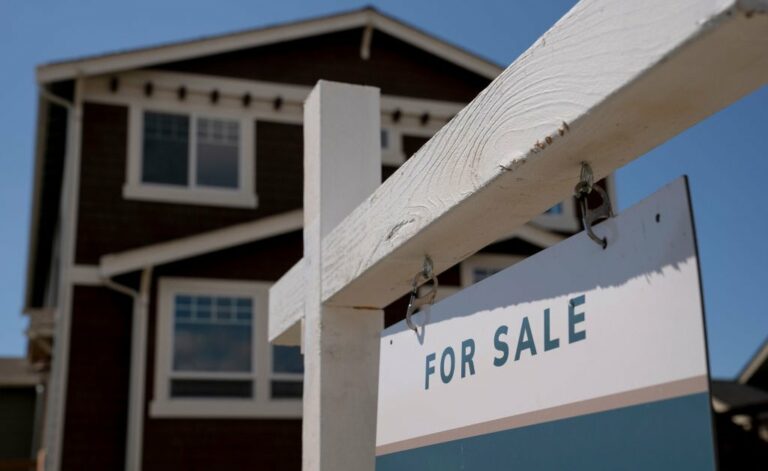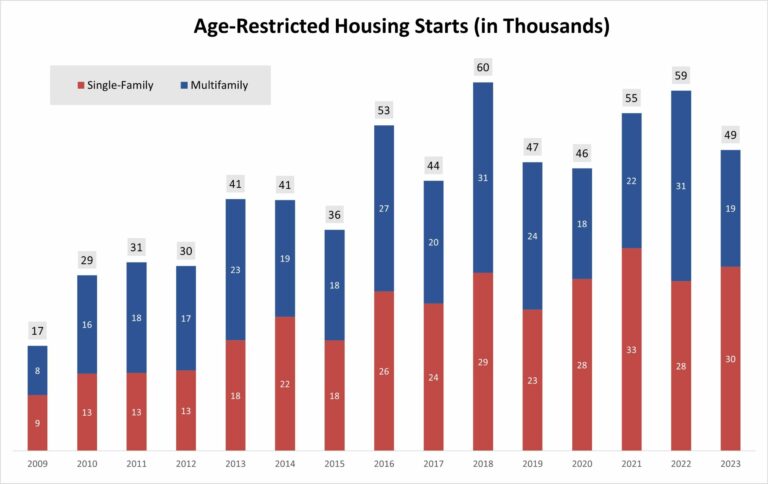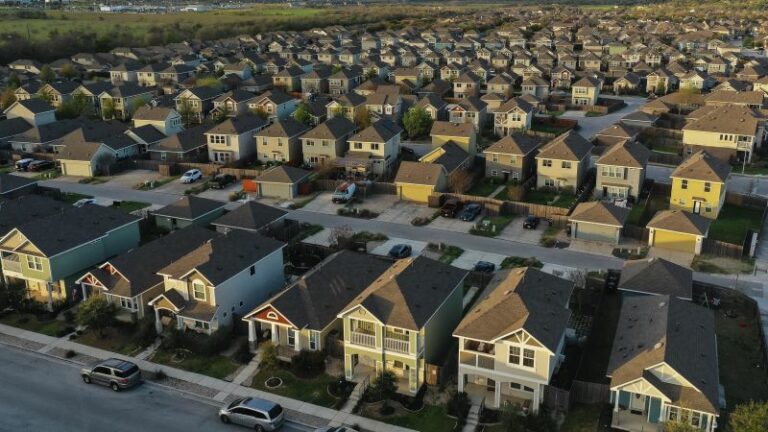It’s chaos from the very start when Trenton Miller swings open the wooden doors of a four-bedroom home in McLean, Virginia, a suburb of Washington DC.
Miller, a 19-year-old real-estate agent, takes the viewer on a frantic jog through all three floors of the $3.4 million property.
He plays rock-paper-scissors with himself in the mirror, pretends to have a distressing trip to the toilet, and falls not once, but three times, on the hardwood floor.
Miller calls it a speed tour.
For the recent high-school graduate, it’s become an important calling card as he starts his career in his hometown of Chambersburg, Pennsylvania, a small county seat west of Gettysburg.
In a stagnant real-estate market, Miller, like other agents, has been forced to get creative to make his listings stand out and find potential buyers. Enter the speed tour. Now, other agents have asked Miller to film his run-throughs of their listings, some even paying as much as $1,500 for a single speed tour posted to his account @trent_miller__, which has 1.3 million followers.
“It’s been a blessing,” Miller told Business Insider. “I really want to make sure I capitalize on the opportunity.”
Miller started posting ‘speed tours’ when he was feeling stuck
Miller intended to invest in rental properties, inspired by real-estate entrepreneurs he admired on YouTube like Grant Cardone, but determined the experience he’d gain as a broker was a good place to start.
Early on, Miller realized that a traditional home tour — where a broker calmly narrates a walk-through of a home for sale and points out commonplace details like the height of the ceilings or finishings on a sink — would get lost on TikTok.
It was also difficult to find homebuyers prepared to endure relatively high mortgage interest rates and expensive home prices.
“Business was slow getting started,” Miller told Business Insider. “I was like, ‘Man, I got to do something different.'”
In April, he showed up to a rental listing in Chambersburg with two ideas: a speed tour, where he would run through the house, and a teleporting tour, where he’d pop up in each room.
He filmed both, but posted the speed tour first later that day. When the clip went viral — it has nearly 5 million views as of July 23 — Miller knew he’d struck gold. He never even got to post the teleporting footage.
Now, his running tours routinely rack up millions of views — some as high as 34 million. He even sells T-shirts with his signature catchphrases for $20 apiece. (One is “Most bathrooms have that!” which he says when he points to mirrors above vanities in bathrooms.)
The viral videos are slowly translating into real-world leads. Someone who watched a speed-tour video of a $600,000 home in Annapolis, Maryland, reached out as an interested buyer, Miller said.
The viral fame has opened doors for his real-estate career
Miller tries not to overthink the alchemy of his tours.
He’ll do one walk-through with a cameraman to map out their course, but purposely tries to go in with as little preparation as possible.
“I think people want to see a raw reaction to the home,” he said. “They want to see personality in videos.”
Miller said he doesn’t edit out the times he falls on camera and tries to make as few cuts in the video as possible to preserve the authentically manic energy.
Other agents representing sellers have reached out, asking Miller to run through their listings. He’s traveled to Florida, Virginia, and Maryland over the last three months to film speed tours of homes.
He told Business Insider he’s leaving for a trip soon to film speed tours for a vacation rental agency, showing off their luxury villas.
Miller said the connections he’s been able to make from his viral fame have put him in touch with the very real-estate investors who inspired him to enter the industry.
Recently, he added, he’s been in touch with one of his original heroes: Grant Cardone.
This article was originally published by a www.businessinsider.com . Read the Original article here. .










This contemporary Portsmouth, Rhode Island, home sits atop helical piers, with a ground-level garage/indoor-outdoor living space and a first floor 12 feet above ground level. This elevation allows for sweeping views of Mount Hope Bay from the main living areas. But the purpose was, in fact, to keep the home safe from floods. When expecting a storm, the homeowners open the garage doors. If floodwater enters and applies pressure to the walls, they simply detach thanks to special fasteners.
Designed by architectural firm ZeroEnergy Design, the L-shaped home has its common areas in the gable-roofed horizontal section on the left and its kitchen, bedroom and office spaces in the vertical shed-roofed section on the right. Also on the right, behind a three-story glass wall, is an elevator wrapped by a staircase.
Airtight construction, continuous insulation and triple-pane windows create a tight envelope. Solar panels on the shed roof provide about the same amount of energy as the homeowners consume.
How to Protect Your Home From Hurricanes and Flooding